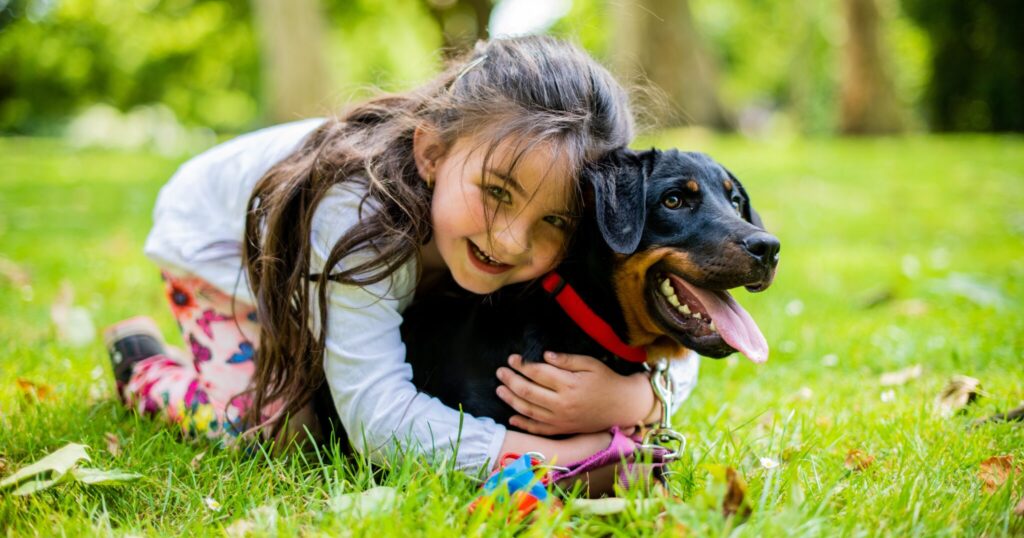If adopting a dog, be careful you don’t adopt one that shows any fear or anxiety around children, as it can take them years to overcome this.
Bringing home something that’s familiar to the dog can help them adjust and make them feel at home. This could be their blanket or toys.
In the beginning, it may help to keep the leash attached to the dog for a while, even at home, in case you need to lead the dog away.
RSPCA advises to “Have the child sit calmly and quietly, and the dog will usually come to investigate out of natural curiosity. Teach the children to speak softly and slowly and to gently stroke the dog on the shoulder, not the top of their head or tail. Reward the dog for calm behaviour with a food treat (by the supervising adult) – this helps the dog associate children with something positive. After this, take the focus off the dog by giving the children another activity.”
Dr Nicole Rous offers the following advice depending on whether the child or the pet comes first in the family.
When you have the pet first, then the baby comes along
-
Train the dog to be more independent prior to baby coming along, perhaps by utilising the services of a trainer.
-
Once your baby starts crying, there is a chance your dog might be frightened by the noise. To combat this, start with desensitising the dog to baby crying sounds (you can find these on YouTube) prior to the birth. Reward and praise the dog and gradually increase the sound as their comfort level increases. Train your dog as to where they are expected to be when hearing these sounds. For example, baby crying sounds might be at feed time so train your dog to rest on their bed when asked.
- Bring home clothes from the hospital that your baby has worn for your pet to sniff before bringing the baby home.
- Crate training in a safe space away from kids is great, so dogs learn they can go to their safe space when they need a break.
- Don’t allow your pet to sleep in your bedroom with the baby as you can’t control what happens when you’re asleep.
- Keep initial interactions between the baby and your dog brief.
- Never leave a pet around a baby or kids unsupervised.
When you have kids first, pets later
- Teach your child the body language signals of dogs to know when to stop engaging with the dog.
- Remind kids not to wake a sleeping dog as this can startle them, resulting in a frightened and unpredictable reaction.
- Teach them that pets are not toys. Riding them like a horse or dressing them up is not ok.
- Set clear boundaries, such as no running, screaming, or chasing dogs. Teach the safe spaces to pat a dog (i.e. the side of their body rather than their face).
- Ensure dogs are put outside when you’re eating, and that no one annoys them when it's their turn to eat.
Introducing pets of strangers and friends and family to children
- Always ask the owner if it is ok to pat the dog out of respect for their boundaries and space. If you can sense the dog is anxious, simply walk away.
- If the dog is of a friend or family, then give your child some of the dog's treats to offer them as an icebreaker.
- Judge from the dog’s reaction whether the child should continue or not with patting. If the dog walks away, for example, encourage the child should leave it alone and not force the dog to interact.
- Do not encourage your child to put their hand out for the stranger’s dog to sniff. This is outdated advice and is risky as they can easily get bitten if the dog is fearful.

